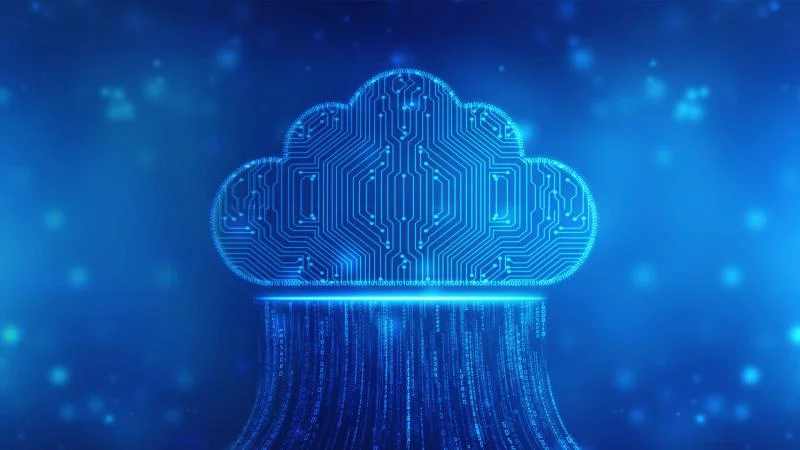Cloud computing and edge computing are two distinct paradigms in the IT landscape that approach data processing, storage, and administration in different ways. Cloud computing is the practice of storing, managing, and processing data using a network of remote servers hosted on the Internet. This model centralises computing resources, and grants users access to a vast pool of shared resources, such as storage, processing capacity, and applications. The advantages of cloud computing include cost savings, scalability, and accessibility from any Internet-connected location.
In contrast, edge computing introduces computation and data storage closer to the location where they are required. Processing data close to the source or at the network’s periphery reduces latency, bandwidth consumption, and the possibility of data loss. This decentralisation of computing resources permits real-time processing and decision-making, making it ideal for time- and location-sensitive applications such as autonomous vehicles, IoT devices, and remote monitoring systems.
The location of data processing and storage is the primary difference between cloud computing and edge computing. Edge computing decentralises and processes data closer to its source, optimising for latency and bandwidth constraints, whereas cloud computing centralises resources and relies on the Internet for accessibility. Edge computing provides real-time processing and localised data administration, whereas cloud computing offers cost savings and scalability.
What is Cloud Computing?
Cloud computing is a modern IT model that lets users access storage, processing power, and apps over the Internet. Users don’t have to rely on local infrastructure or devices to handle and process their data. Instead, they can use remote servers hosted in data centres. The transition to a virtualised setting has many benefits. First, cloud computing saves money because companies no longer have to spend much on infrastructure, upkeep, and on-site upgrades. The pay-as-you-go model lets them only pay for the tools they use, so it’s a cheaper way to do things.
The second significant benefit of cloud computing is that it is easy to grow. Users can quickly increase or decrease their resources to meet evolving demands and don’t have to worry about the limits of their tools. This helps businesses stay quick and flexible in markets with much competition. Thirdly, cloud computing allows for greater accessibility. Users can access their data and applications from anywhere with an internet link. This makes it easier for people to work together and from remote locations. This global availability makes it easier for businesses to work well across countries and time zones.
Lastly, cloud service companies often use strong security measures and backup plans to protect their customers’ data. This gives users peace of mind that their data is safe from possible security breaches and system breakdowns. In short, cloud computing changes how we store, handle, and process data using the power of the Internet and remote servers. It saves money, can be expanded, is easy to use, and has better security, making it a good choice for businesses and people.
What is Edge Computing?
Edge computing is a new technology that moves data processing closer to the source of the data, which is often at the edge of the network. This makes data processing less centralised. Traditional cloud computing puts all the tools in data centres and uses the Internet to send and process data. This approach is different. Edge computing’s primary goal is to cut down on latency and lower the amount of data that needs to be sent over the network. By processing data locally or at nearby edge devices, it allows decisions to be made in real-time and makes the best use of bandwidth, making it perfect for apps that depend on time and location.
One of the best things about edge computing is that it can support the rising number of Internet of Things (IoT) devices, which create vast amounts of data that can overwhelm traditional networks. Edge computing lets these devices handle and analyse data locally, so they don’t have to talk to cloud servers all the time. Better privacy and safety are other benefits. When data processing happens closer to the source, personal information is less likely to be exposed to possible security breaches while being sent.
Edge computing can also make a system more reliable by putting computing tools in multiple places. This decentralisation can lessen the effects of localised failures and keep essential applications and services running smoothly. Ultimately, edge computing solves the problems with centralised cloud computing by handling data closer to where it comes from. It reduces latency, makes better use of bandwidth, improves security, and makes systems more resistant to failure. This makes it an essential tool for the future of computing.
Difference Between Cloud Computing and Edge Computing
The primary difference between cloud and edge computing is where the data is processed and stored. Cloud computing provides benefits such as reduced costs, more scalability, and easier accessibility by centralising resources in data centres and using the Internet for data transmission and processing. In contrast, edge computing allows data processing to be distributed by bringing it to the network’s edge, which can be closer to the data source and reduce latency and bandwidth consumption. Time- and location-sensitive applications, such as IoT devices and autonomous systems, can benefit from this method because it supports real-time decision-making and enhances privacy and security. We’ve compared cloud and edge computing below to highlight their fundamental differences.
Data Processing Location
The difference between edge computing and cloud computing is that the latter processes data closer to its source or at the network’s periphery.
Latency
The greater the distance between end users and data centres, the greater the potential for latency in cloud computing. By processing data locally or on adjacent edge devices, latency is reduced using edge computing.
Bandwidth Usage
Increased data transfer bandwidth between data centres is a prerequisite for cloud computing. By performing computations at the network’s periphery, or “edge,” edge computing reduces the amount of data that must be transported over the network.
Real-time Decision-Making
Due to its latency, cloud computing may not be suitable for time-critical tasks. With edge computing, data may be processed close to its source, allowing for timely decisions to be made.
Scalability and Cost
With its centralised, shared resources and pay-as-you-go model, cloud computing provides more scalability and cost savings. More investment in regionally relevant hardware and infrastructure may be necessary for effective edge computing.
Privacy and Security
Your data could be vulnerable to theft when using the cloud while in transit. By processing data closer to the source, edge computing improves privacy and security by lowering the risks involved with data transmission.







